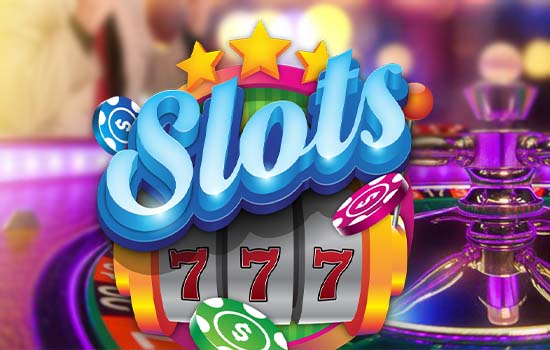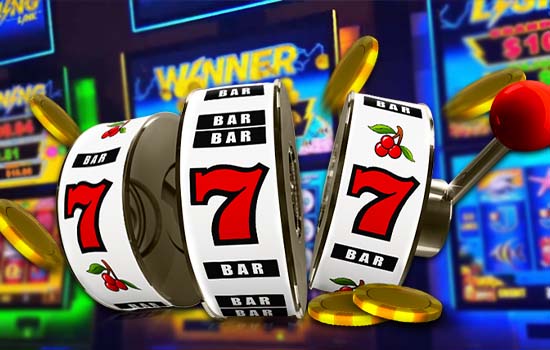Особенности официального сайта и использование зеркала Casino-X.com
Casino X является современной игровой платформой с большим ассортиментом азартных развлечений и возможностью запускать автоматы с любого гаджета. Также здесь предусмотрено быстрое выведение средств, предложены распространенные платежные инструменты для проведения финансовых операций, разработана привлекательная программа бонусов для новых и постоянных клиентов. Для комфортной игры на том или ином устройстве казино предлагает специальное приложение для iOS и Android. Администрация виртуального заведения предусматривает возможные блокировки по различным причинам и предлагает действенное решение ситуации. Оно заключается в установке и использовании специальной программы для компьютера, которая обеспечивает доступ к азартным развлечениям вне зависимости от тех или иных блокировок.
Тонкости функционирования зеркала Casino-X
Блокирование онлайн казино осуществляется на основании соответствующего распоряжения государственных органов поставщиками услуг интернета (в РФ данная функция находится в компетенции Роскомнадзора). Другими словами, провайдерами составляются списки ресурсов, которые являются запрещенными, а также ссылок на них.
Зеркала необходимы для обеспечения доступа к игровым платформам вне зависимости от их блокировок. Они представляют собой измененные адреса соответствующего официального сайта. Пока провайдер не находит зеркало, оно функционирует. Но рано или поздно, оно блокируется. Поэтому следует искать актуальные альтернативные ссылки, которые являются действующими в настоящее время.
Как правильно использовать зеркала?
Главная задача зеркала – обеспечение бесперебойного доступа на официальный сайт того или иного казино. Также зеркало должно максимально быстро осуществлять переход без предварительной установки игроком специальных программ, использования удаленного компьютера, серверов и частных сетей. Достаточно просто ввести в адресную строку браузера URL.
Перечисленные факторы являются преимуществами использования альтернативных ссылок. Среди недостатков можно отметить тот факт, что они также подвергаются блокированию. Обычно это вопрос времени. Нередко так случается, что сегодня работающее зеркало уже завтра перестает открываться. Учитывая это, рекомендуется скачать программу на смартфон или компьютер, установить ее и использовать для посещения игровой платформы Казино Х.
Альтернативные варианты обхода блокировки онлайн казино
Прокси-серверы позволяют обходить блокирования и посещать казино. Они являются компьютерами, которые установлены в локациях с неограниченным доступом на соответствующий сайт.
Еще одна альтернатива зеркалам – применение расширений VPN в браузере. Они подключают пользователя к запрещенному ресурсу посредством виртуальной частной сети, к которой у провайдера отсутствует доступ. Приложения для активации VPN также могут быть платными и бесплатными. Разница между ними заключается также в скорости загрузки. Важно отметить, что бесплатные приложения не обеспечивают конфиденциальность собранных данных (пароль, логин) и могут передавать ее третьим лицам без предварительного уведомления.
Среди всех существующих способов обхода блокировки запрещенных ресурсов считаются анонимайзеры и браузер TOR.
Как зарегистрироваться в Casino-X?

Создание учетной записи в Casino X происходит быстро и не требует от посетителя платформы больших усилий. Так, потребуется указать адрес электронной почты, номер телефона, имя и фамилию. Обязательно необходимо подтвердить предоставленную информацию – она должна быть актуальной и действительной. Дополнительно при регистрации выбирается валюта счета и при наличии вводится код для получения бонуса на бесплатные вращения.
Верификация является обязательной процедурой для клиентов казино, которые планируют играть и выигрывать реальные деньги. При выведении средств на сумму от 1000 долларов (для других валют сумма является эквивалентной текущему курсу) игроку потребуется предоставить администрации казино документы для подтверждения личности.
Создание учетной записи в Casino-X
Для создания учетной записи в Casino-X необходимо зайти на официальный сайт казино и следовать следующему алгоритму действий:
- нажать на клавишу «Регистрация» в верхней части панели;
- в появившемся окошке заполнить все обязательные строки (адрес электронной почты, номер телефона, пароль);
- в дополнительном окошке регистрации указать имя и фамилию, выбрать валюту счета;
- при наличии ввести код для получения подарка от казино в специальную строку;
- ознакомиться с правилами и положением о защите информации и подтвердить это;
- кликнуть на клавишу «Завершить».
Сервис Casino-X предусматривает использование личного аккаунта в одной из социальных сетей для быстрой регистрации (Twitter, Google, Facebook, ВКонтакте, mail.ru). Но позже гемблер должен дополнительно указать адрес электронной почты и номер телефона в Личном кабинете, а также подтвердить предоставленные данные.
На странице регистрации присутствует функция получения промокодов, новостей и специальных предложений от Casino-X. При желании можно активировать ее, чтобы получать рассылку удобным способом, или отказаться.
Программа бонусов от Casino-X

В рамках программы бонусов от Casino-X каждый зарегистрированный игрок имеет возможность получения нескольких подарков. За регистрацию на официальном сайте казино и подтверждении предоставленной информации посетитель может получить презент в размере до 197 500 рублей. Для постоянных посетителей игровой платформы, которые проявляют активность (выполняют задания, пополняют счет на определенные суммы и др.), предусмотрены бездепозитные подарки. Их максимальный размер составляет 10 000 рублей.
Отдельного внимания заслуживают конкурсы и турниры, проводимые на платформе Casino-X. Перечень интересных предложений время от времени расширяется. Специалисты казино мониторят современный рынок гемблинга, чтобы предлагать клиентам более выгодные условия взаимодействия.
Особенности бонуса за регистрацию в Casino X
Приветственный пакет Casino X включает в себя следующие бонусы:
- Денежные средства в размере до 100 000 рублей при первом пополнении счета, до 15 000 рублей – при втором, до 20 000 – при третьем, до 25 000 – при четвертом и до 37 500 при пятом.
- Бесплатные вращения для игрового автомата The Dog House (провайдер Pragmatic Play) в количестве 200 штук при ставке 16 рублей. В рамках приветственного пакета фриспины выдаются 10 дней подряд по 20 единиц ежедневно.
- Бесплатная ставка на спорт. Сумма совершения ставки составляет 500 рублей.
Основное условие для получения перечисленных выше поощрений заключается во внесении депозита в размере от 1000 рублей.
Бонусы за выполнение заданий
Чтобы найти задания, за выполнение которых можно получать бонусы, необходимо войти в Личный кабинет на официальном сайте казино вулкан. В разделе «Промо» и подразделе «Достижения» находятся различные задания, каждое из которых предусмотрено для определенного игрового автомата. Обычно здесь можно найти 150+ заданий. При выполнении выбранного задания гость клуба получает от 50 до 200% на депозит. Дополнительно ему начисляется бездепозитный подарок в размере 2 500-10 000 рублей. Задания еще называют квестами, они характеризуются несложным выполнением. Примером заданий может быть «Выиграть 200 раундов за 1 месяц», «Победить 5 раз подряд» и др.
Магазин бонусов от Casino X
Игровая платформа Casino X предлагает клиентам возможность приобретать bonus-игры. Для этого в разделе «Магазин бонусов» необходимо выбрать желаемую игру, обязательно указать ставку на спин и ознакомиться с условиями отыгрыша. Обычно размер ставки варьируется от 20 до 250 рублей. Почти все поощрения не имеют вейджера.
Программа лояльности Casino X
Программа лояльности позволяет достигать определенных статусов в Казино Х. В соответствии с суммой, которая тратится на совершение депозита, гемблеру начисляются баллы. В зависимости от количества накопленных баллов игрок достигает того или иного уровня в программе лояльности.
Статусы программы лояльности:
- Novice – игрок получает его при регистрации;
- Regular – на него переходит игрок, совершивший пополнения на общую сумму от 100 долларов;
- Bronze – при общей сумме депозитов 3 000 долларов;
- Silver – 20 000 долларов;
- Gold – 40 000;
- Platinum – 300 000;
- Ultimate – 1 500 000.
Когда игрок достигает уровня Gold, перед ним открываются возможности пользоваться специальным каналом технической службы поддержки.
Кэшбек от Казино Х
Под кэшбеком понимается возврат определенной части средств, которые были потрачены игроком без выигрыша. Дополнительно казино возвращает часть от всех проигранных средств. Данное предложение в сфере гемблинга встречается достаточно редко.
Конкурсы, лотереи и турниры от Casino X
Казино Х постоянно проводит различные соревнования. При участии в турнирах необходимо копить баллы – их количество влияет на размер выигрыша. В конкурсах необходимо совершать ставки на определенную сумму средств для квалификации в следующий раунд. Определение победителей осуществляется случайным образом.
Ассортимент азартных игр в Casino-X
Казино Х предлагает большой ассортимент игровых автоматов – классические слоты, карточные и настольные игры, аркады, LIVE-раздел и др. Также клиенты казино имеют возможность совершать ставки на спорт.
Каталог азартных развлечений от Казино Х включает в себя следующие игры:
- Игровые автоматы. Всего в казино свыше 1500 слотов. Их ассортимент постоянно обновляется. Для удобства игры распределены на отдельные категории – животные, драконы, космос, природа и др. Также присутствуют игры с джекпотами от 3 000 000 рублей и выше.
- Настольные игры. В каталоге примерно 100 различных настольных и карточных игр. Это баккара, покер, рулетка, сик-бо и др. Столы работают круглосуточно.
- LIVE-раздел. Игры с участием живых дилеров привлекают своей атмосферой. Здесь более 300 азартных развлечений, среди которых баккары, рулетка, лотереи, Football Studio, покер и др.
- Аркады. В категории каталога «Другие» можно найти необычные задания, скретч-лотереи. Здесь насчитывается свыше 120 игр подобного рода.
- Ставки на спорт. У гостей Казино Х есть возможность совершения ставок на различные спортивные турниры (Евролига, Лига чемпионов, Чемпионат мира и др.). В каталоге присутствуют турниры различных рангов – от высокого до очень низкого.
Игровой софт Казино Х наполнен азартными играми от 50 компаний. Это ведущие надежные провайдеры, среди которых можно выделить Playson, Yggdrasil, Igrosoft, Quickspin и др. Компании, с которыми сотрудничает Casino-X, предоставляет качественный лицензированный софт. Время от времени игровые автоматы проверяются сторонними организациями. Так администрация казино заботиться о собственной репутации.
Мобильное приложение Казино Х
Казино Х предусматривает возможность скачивания и установки на устройство специального приложения. Оно разработано для Android и iOS. Главное преимущество использования приложения – возможность обхода блокировки сайта казино. Оно автоматически подключается к серверам, которые функционируют в настоящее время. Также приложение экономно используется трафик, что есть дополнительным преимуществом его использования. Найти и скачать его можно на официальном сайте Casino-X, предварительно обратившись в службу поддержки.
